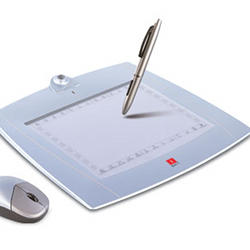
Although the world has been going paperless, document processing typically grinds to a halt when the time comes to sign something. That is when security-conscious organizations typically demand an original, handwritten signature—an all-too-familiar process that requires printing, delivering, and hand-signing paper documents. Yet this insistence on paper originals is starting to give way to the increasing use of electronic signatures, also called e-signatures, which promise all the security of traditional signing with the speed, convenience, and cost savings of doing business online.
According to a 2012 report from Gartner Research, the market for e-signature offerings grew at a 48% compound annual rate from $111 million in 2010 to $164 million 2011. That’s growth from a decidedly low baseline, but if that growth rate continues, e-signatures won’t remain in the minority for long. An April report by Forrester Research predicts that in 10 years, the dominant form of signature will be digital, "with adoption driven by rampant uptake in consumer technology."
An e-signature is simply the electronic equivalent of your original handwritten signature—a way to show that you have approved the contents of a document. "Some people think it’s a digitized signature, but that’s actually kind of dangerous," explains Tom Gonser, founder and chief strategy officer of DocuSign, a market leader. The most obvious danger: once a signature is stored as a JPEG image, it becomes easy for the wrong person to copy and paste it into a different document.
Digitized signatures pose other problems, too, as Gonser demonstrates with a prank he sometimes pulls: email him a non-disclosure agreement as a PDF file, and he’ll make harmless edits to the document and insert a signature that may or may not look like his real John Hancock. Since most people don’t bother to look over e-mailed agreements for stealthy changes, nor do they typically have the signer’s real signature for comparison, they open themselves to the risk of fraud. That’s why, even more than a decade after the E-Sign Act of 2000 laid the legal groundwork for electronic signatures, high-stakes contracts by and large have continued to be signed on paper with an original, "wet" signature.
Unlike digitized signatures, e-signatures are designed to prevent fraud at every stage, from proving a signer’s identity to keeping tight access control to the documents, so even banks and insurance companies have begun to use them. In fact, financial services companies have been the earliest and most enthusiastic adopters of this technology, in part because the large volume of documents these firms must process makes the switch to e-signatures worthwhile.
In the simplest use case, the person requesting a signature uploads the document to be signed, and uses the e-signature vendor’s Web site to email the signer a link to that document; when the recipient clicks the link, the e-signature service takes him or her through the signing process, which authenticates the user and collects a signature along with audit-trail metadata such as the timestamp and the signer’s IP address. All the while, the document, signature, and associated metadata remain securely encrypted in the cloud.
Large organizations often need to go beyond such ad-hoc use of e-signatures, integrating the signature process into a smooth chain of other automated business processes. Gregg Kreizman, an analyst at Gartner, explains it this way: "If I’m an enterprise that has a system that outputs documents to be signed"—such as a content management system, a CRM (customer relationship management) system, or an ERP (enterprise resource planning) system—"then the [e-signature] offerings have APIs to call, and you send data and metadata around it, like the signatories list and the routing order. The service picks up the ball and runs with it—just as if the user in ad-hoc mode sent a document." Mangesh Bhandarkar, group product manager for Adobe EchoSign, says this kind of integration is all part of his company’s strategy to "help people transition from paper-based workflows to a completely digital end-to-end workflow."
Integrating e-signatures into existing systems can be a challenge, says Craig Le Clair, a vice president and principal analyst at Forrester. Yet Forrester clients who have adopted the technology overwhelmingly report excellent results. "It’s rare when you have interviews that are almost 100% extremely positive, and they’d never get back to the paper way," he says. For example, one health insurer transformed the way it collects doctors’ signatures to be in the provider network. The company used to have to send staffers to chase down doctors for contract renewals, but now that these contracts are accessible from a device in the doctor’s pocket, the insurer obtains 80% to 90% of the doctors’ signatures on the first try, Le Clair says.
EchoSign and DocuSign are among many vendors vying for their share of the e-signature market; others include Silanis, AssureSign, and RightSignature. Yet for now, the field seems wide open. "Our biggest competitor," says Adobe’s Bhandarkar, "is paper."
Based in San Francisco, Marina Krakovsky is the co-author of Secrets of the Moneylab: How Behavioral Economics Can Improve Your Business.



Join the Discussion (0)
Become a Member or Sign In to Post a Comment